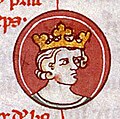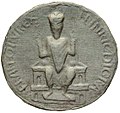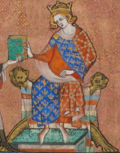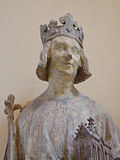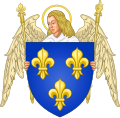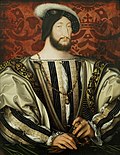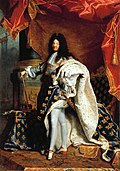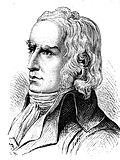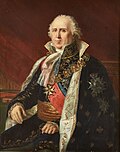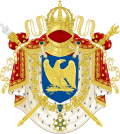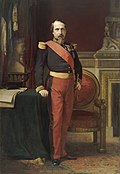| Nº | Portrait | Name
(Birth–Death) | Term of office | Time in office | Political party |
|---|
| 2 |  | Adolphe Thiers [110]
(1797–1877) | 31 August 1871 | 24 May 1873 | 1 year, 266 days | Moderate Monarchist (Orléanist);
Opportunist Republican |
|---|
| Initially a moderate monarchist, named President of France following the adoption of the Rivet law, establishing provisional republican institutions. He became a supporter of the Third Republic during his term. He resigned in the face of hostility from the National Assembly, largely in favour of a return to the monarchy. |
| 3 |  | Patrice de MacMahon [111]
(1808–1893) | 24 May 1873 | 30 January 1879 | 5 years, 251 days | Monarchist (Legitimist) |
|---|
| A Marshal of France, he was the only monarchist (and only Duke) to serve as President of the Third Republic. He resigned shortly after the republican victory in the January 1879 legislative election, following a previous republican victory in 1877, after his decision to dissolve the Chamber of Deputies. During his term, the Constitutional Laws of 1875 that served as the Constitution of the Third Republic were passed; he therefore became the first President under the constitutional settlement that would last until 1940. |
| The Government of Jules Armand Dufaure deputized during the interim (30 January 1879). |
| 4 | 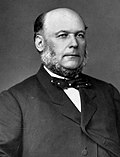 | Jules Grévy [112]
(1807–1891) | 30 January 1879 | 2 December 1887 | 8 years, 306 days | Opportunist Republican |
|---|
| The first President of France to complete a full term, he was easily reelected in December 1885. He was nonetheless forced to resign, following an honours scandal in which his son-in-law was implicated. |
| The Government of Maurice Rouvier deputized during the interim (2–3 December 1887). |
| 5 |  | Sadi Carnot [113]
(1837–1894) | 3 December 1887 | 25 June 1894† | 6 years, 205 days | Opportunist Republican |
|---|
| His term was marked by Boulangist unrest and the Panama scandals, as well as by diplomacy with Russia. Assassinated (stabbed) by Sante Geronimo Caserio a few months before the end of his term, he is interred at the Panthéon. |
| The Government of Charles Dupuy deputized during the interim (25–27 June 1894). |
| 6 |  | Jean Casimir-Perier [114]
(1847–1907) | 27 June 1894 | 16 January 1895 | 205 days | Opportunist Republican |
|---|
| Casimir-Perier's was the shortest presidential term: he resigned after six months and 20 days. |
| The Government of Charles Dupuy deputized during the interim (16–17 January 1895). |
| 7 |  | Félix Faure [115]
(1841–1899) | 17 January 1895 | 16 February 1899† | 4 years, 30 days | Opportunist Republican;
Progressive Republican |
|---|
| Pursued colonial expansion and ties with Russia. President during the Dreyfus affair. Four years into his term, he died of apoplexy at the Élysée Palace. |
| The Government of Charles Dupuy deputized during the interim (16–18 February 1899). |
| 8 |  | Émile Loubet [116]
(1838–1929) | 18 February 1899 | 18 February 1906 | 7 years, 0 days | Democratic Republican Alliance |
|---|
| During his seven-year term, the 1905 law on the Separation of the Churches and the State was adopted. He did not seek reelection at the end of his term. |
| 9 |  | Armand Fallières [117]
(1841–1931) | 18 February 1906 | 18 February 1913 | 7 years, 0 days | Democratic Republican Alliance;
then Democratic Republican Party |
|---|
| President during the Agadir Crisis, when French troops first occupied Morocco. He was a party to the Triple Entente, which he strengthened by diplomacy. Like his predecessor, he did not seek reelection. |
| 10 |  | Raymond Poincaré [118]
(1860–1934) | 18 February 1913 | 18 February 1920 | 7 years, 0 days | Democratic Republican Party;
then Democratic Republican Alliance |
|---|
| President during World War I. He subsequently served as Prime minister, 1922–1924 and 1926–1929. |
| 11 |  | Paul Deschanel [119]
(1855–1922) | 18 February 1920 | 21 September 1920 | 247 days | Democratic Republican Alliance;
then Democratic Republican and Social Party |
|---|
| An intellectual elected to the Académie Française, he overcame the popular Georges Clemenceau, to general surprise, in the January 1920 election. He resigned after eight months due to health problems. |
| The Government of Alexandre Millerand deputized during the interim (21–23 September 1920). |
| 12 |  | Alexandre Millerand [120]
(1859–1943) | 23 September 1920 | 11 June 1924 | 3 years, 262 days | Independent |
|---|
| An "Independent Socialist" increasingly drawn to the right, he resigned after four years following the victory of the Cartel des Gauches in the 1924 legislative election. |
| The Government of Frédéric François-Marsal deputized during the interim (11–13 June 1924). |
| 13 | 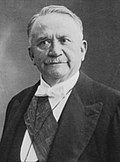 | Gaston Doumergue [121]
(1863–1937) | 13 June 1924 | 13 June 1931 | 7 years, 0 days | Radical-Socialist and Radical Republican Party |
|---|
| The first Protestant President, he took a firm political stance against Germany and its resurgent nationalism. His seven-year term was marked by ministerial discontinuity. |
| 14 |  | Paul Doumer [122]
(1857–1932) | 13 June 1931 | 7 May 1932† | 329 days | Independent |
|---|
| Elected in the second round of the 1931 election, having defeated Aristide Briand. Assassinated (shot) by the mentally unstable Paul Gorguloff. |
| The Government of André Tardieu deputized during the interim (7–10 May 1932). |
| 15 |  | Albert Lebrun [123]
(1871–1950) | 10 May 1932 | 11 July 1940
(de facto) | 8 years, 32 days | Democratic Alliance |
|---|
| Reelected in 1939, his second term was interrupted by the rise to power of Marshal Philippe Pétain. |









